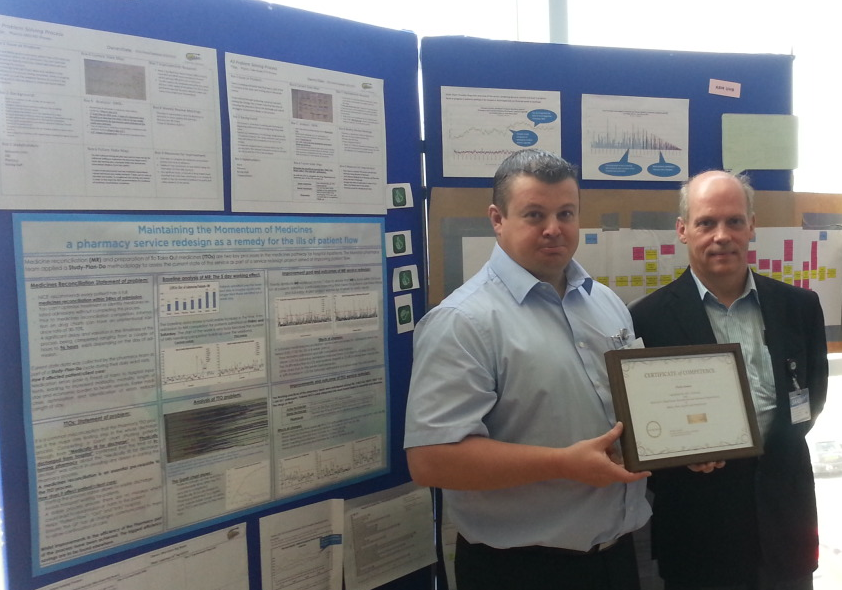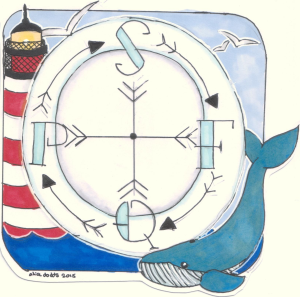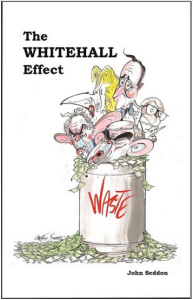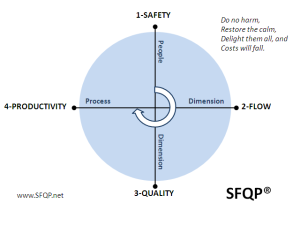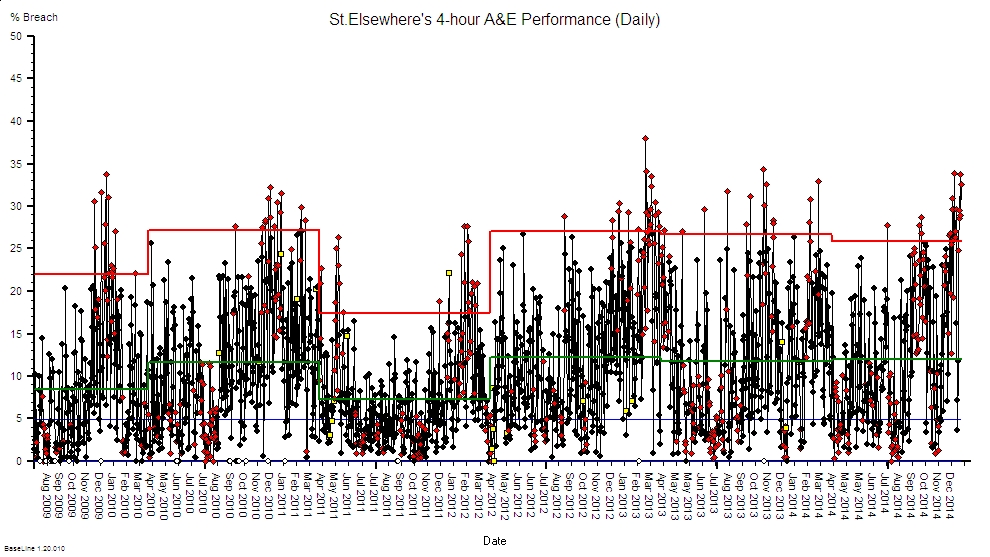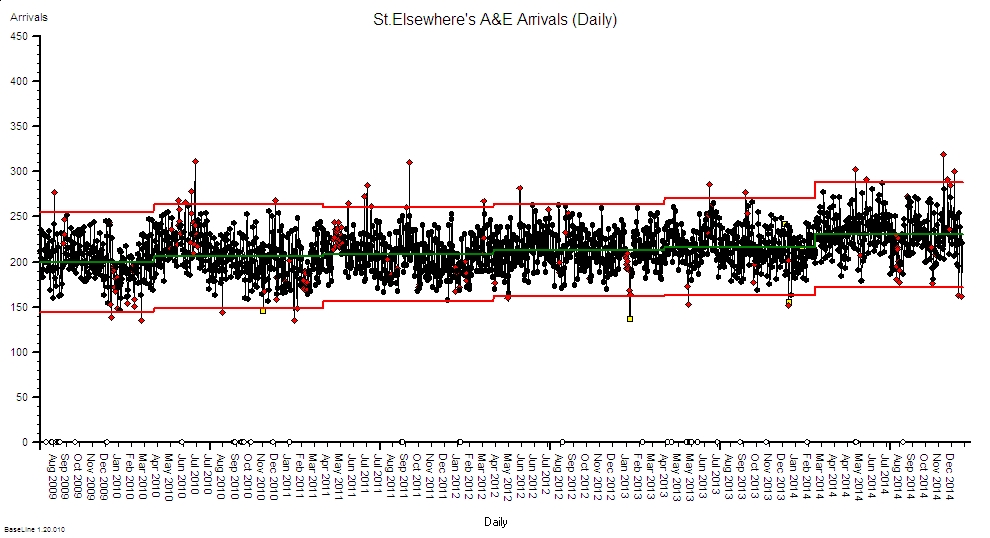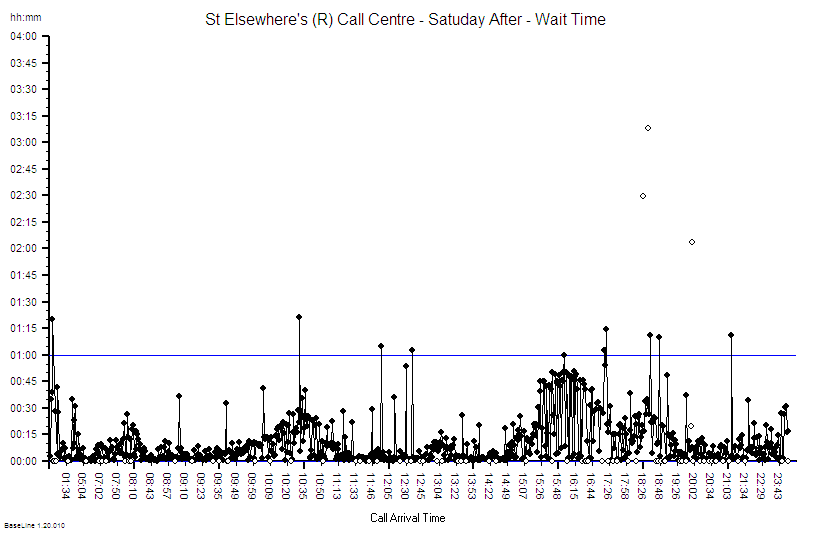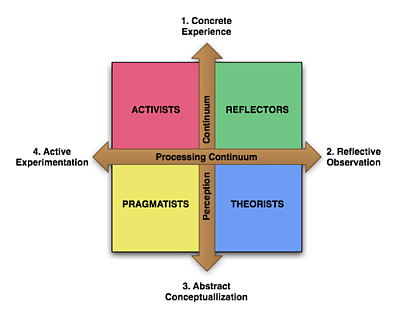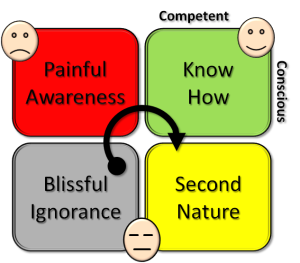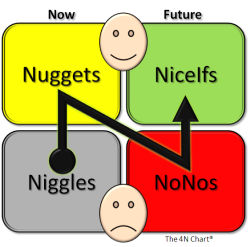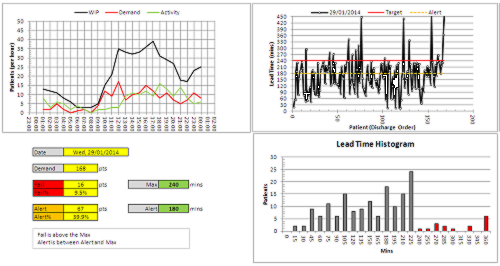 [Bing bong]. The sound heralded Lesley logging on to the weekly Webex coaching session with Bob, an experienced Improvement Science Practitioner.
[Bing bong]. The sound heralded Lesley logging on to the weekly Webex coaching session with Bob, an experienced Improvement Science Practitioner.
<Bob> Good afternoon Lesley. How has your week been and what topic shall we explore today?
<Lesley> Hi Bob. Well in a nutshell, the bit of the system that I have control over feels like a fragile oasis of calm in a perpetual desert of chaos. It is hard work keeping the oasis clear of the toxic sand that blows in!
<Bob> A compelling metaphor. I can just picture it. Maintaining order amidst chaos requires energy. So what would you like to talk about?
<Lesley> Well, I have a small shoal of FISHees who I am guiding through the foundation shallows and they are getting stuck on Little’s Law. I confess I am not very good at explaining it and that suggests to me that I do not really understand it well enough either.
<Bob> OK. So shall we link those two theme – chaos and Little’s Law?
<Lesley> That sounds like an excellent plan!
<Bob> OK. So let us refresh the foundation knowledge. What is Little’s Law?
<Lesley>It is a fundamental Law of process physics that relates flow, with lead time and work in progress.
<Bob> Good. And specifically?
<Lesley> Average lead time is equal to the average flow multiplied by the average work in progress.
<Bob>Yes. And what are the units of flow in your equation?
<Lesley> Ah yes! That is a trap for the unwary. We need to be clear how we express flow. The usual way is to state it as number of tasks in a defined period of time, such as patients admitted per day. In Little’s Law the convention is to use the inverse of that which is the average interval between consecutive flow events. This is an unfamiliar way to present flow to most people.
<Bob> Good. And what is the reason that we use the ‘interval between events’ form?
<Leslie> Because it is easier to compare it with two critically important flow metrics … the takt time and the cycle time.
<Bob> And what is the takt time?
<Leslie> It is the average interval between new tasks arriving … the average demand interval.
<Bob> And the cycle time?
<Leslie> It is the shortest average interval between tasks departing …. and is determined by the design of the flow constraint step.
<Bob> Excellent. And what is the essence of a stable flow design?
<Lesley> That the cycle time is less than the takt time.
<Bob>Why less than? Why not equal to?
<Leslie> Because all realistic systems need some flow resilience to exhibit stable and predictable-within-limits behaviour.
<Bob> Excellent. Now describe the design requirements for creating chronically chaotic system behaviour?
<Leslie> This is a bit trickier to explain. The essence is that for chronically chaotic behaviour to happen then there must be two feedback loops – a destabilising loop and a stabilising loop. The destabilising loop creates the chaos, the stabilising loop ensures it is chronic.
<Bob> Good … so can you give me an example of a destabilising feedback loop?
<Leslie> A common one that I see is when there is a long delay between detecting a safety risk and the diagnosis, decision and corrective action. The risks are often transitory so if the corrective action arrives long after the root cause has gone away then it can actually destabilise the process and paradoxically increase the risk of harm.
<Bob> Can you give me an example?
<Leslie>Yes. Suppose a safety risk is exposed by a near miss. A delay in communicating the niggle and a root cause analysis means that the specific combination of factors that led to the near miss has gone. The holes in the Swiss cheese are not static … they move about in the chaos. So the action that follows the accumulation of many undiagnosed near misses is usually the non-specific mantra of adding yet another safety-check to the already burgeoning check-list. The longer check-list takes more time to do, and is often repeated many times, so the whole flow slows down, queues grow bigger, waiting times get longer and as pressure comes from the delivery targets corners start being cut, and new near misses start to occur; on top of the other ones. So more checks are added and so on.
<Bob> An excellent example! And what is the outcome?
<Leslie> Chronic chaos which is more dangerous, more disordered and more expensive. Lose lose lose.
<Bob> And how do the people feel who work in the system?
<Leslie> Chronically naffed off! Angry. Demotivated. Cynical.
<Bob>And those feelings are the key symptoms. Niggles are not only symptoms of poor process design, they are also symptoms of a much deeper problem: a violation of values.
<Leslie> I get the first bit about poor design; but what is that second bit about values?
<Bob> We all have a set of values that we learned when we were very young and that have bee shaped by life experience. They are our source of emotional energy, and our guiding lights in an uncertain world. Our internal unconscious check-list. So when one of our values is violated we know because we feel angry. How that anger is directed varies from person to person … some internalise it and some externalise it.
<Leslie> OK. That explains the commonest emotion that people report when they feel a niggle … frustration which is the same as anger.
<Bob>Yes. And we reveal our values by uncovering the specific root causes of our niggles. For example if I value ‘Hard Work’ then I will be niggled by laziness. If you value ‘Experimentation’ then you may be niggled by ‘Rigid Rules’. If someone else values ‘Safety’ then they may value ‘Rigid Rules’ and be niggled by ‘Innovation’ which they interpret as risky.
<Leslie> Ahhhh! Yes, I see. This explains why there is so much impassioned discussion when we do a 4N Chart! But if this behaviour is so innate then it must be impossible to resolve!
<Bob> Understanding how our values motivate us actually helps a lot because we are naturally attracted to others who share the same values – because we have learned that it reduces conflict and stress and improves our chance of survival. We are tribal and tribes share the same values.
<Leslie> Is that why different departments appear to have different cultures and behaviours and why they fight each other?
<Bob> It is one factor in the Silo Wars that are a characteristic of some large organisations. But Silo Wars are not inevitable.
<Leslie> So how are they avoided?
<Bob> By everyone knowing what common purpose of the organisation is and by being clear about what values are aligned with that purpose.
<Leslie> So in the healthcare context one purpose is avoidance of harm … primum non nocere … so ‘safety’ is a core value. Which implies anything that is felt to be unsafe generates niggles and well-intended but potentially self-destructive negative behaviour.
<Bob> Indeed so, as you described very well.
<Leslie> So how does all this link to Little’s Law?
<Bob>Let us go back to the foundation knowledge. What are the four interdependent dimensions of system improvement?
<Leslie> Safety, Flow, Quality and Productivity.
<Bob> And one measure of productivity is profit. So organisations that have only short term profit as their primary goal are at risk of making poor long term safety, flow and quality decisions.
<Leslie> And flow is the key dimension – because profit is just the difference between two cash flows: income and expenses.
<Bob> Exactly. One way or another it all comes down to flow … and Little’s Law is a fundamental Law of flow physics. So if you want all the other outcomes … without the emotionally painful disorder and chaos … then you cannot avoid learning to use Little’s Law.
<Leslie> Wow! That is a profound insight. I will need to lie down in a darkened room and meditate on that!
<Bob> An oasis of calm is the perfect place to pause, rest and reflect.
 Systems are made up of inter-dependent parts. And each part is a smaller system made up of inter-dependent parts. And so on.
Systems are made up of inter-dependent parts. And each part is a smaller system made up of inter-dependent parts. And so on.



